iOS 11 overtakes earlier versions of Apple's mobile OS
Less than two months after its release, Apple's iOS 11 surpassed its predecessor and is now on more than half of all iPhones and iPads. That's in stark contrast to Android Oreo, which is on less than 1% of all Android devices even though it's been out longer
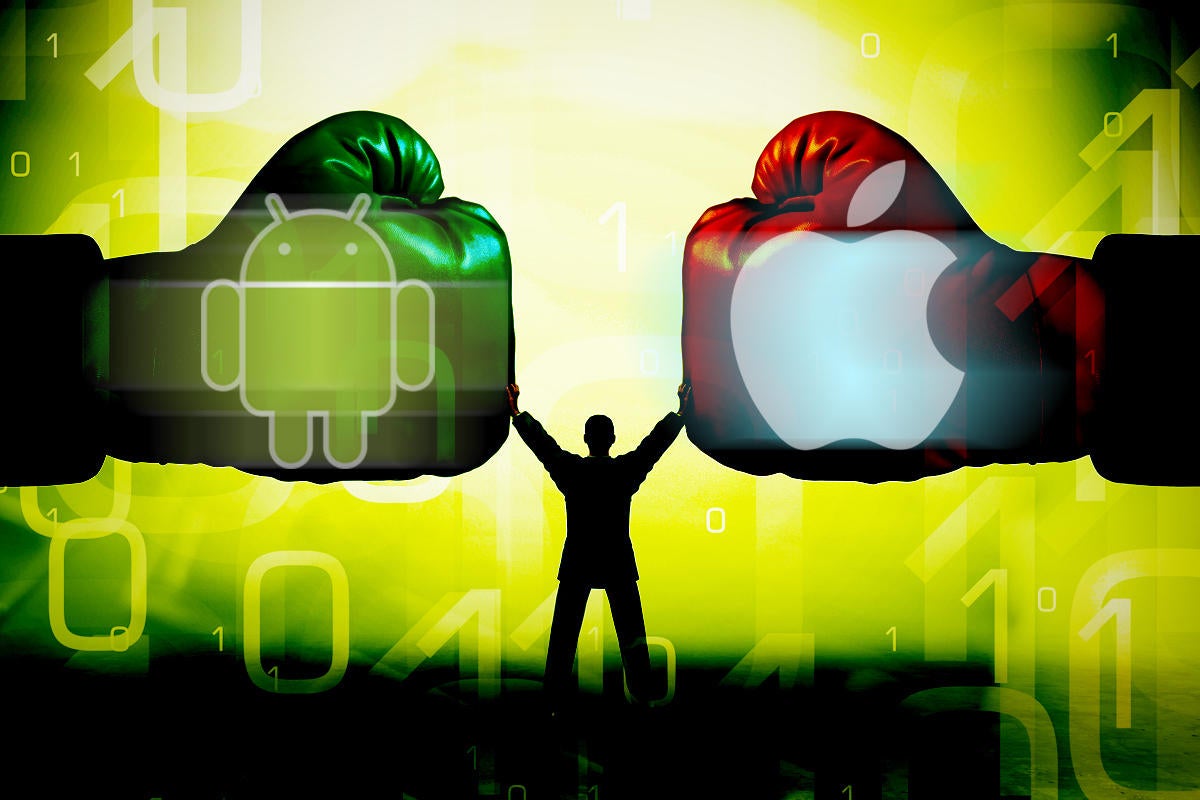
Apple’s iOS 11 is now the company’s most popular mobile platform, according to new data shared by the company.
Less than two months after its release on Sept. 19, the mobile platform has achieved a 52% adoption rate, Apple said on its App Store support webpage for developers.
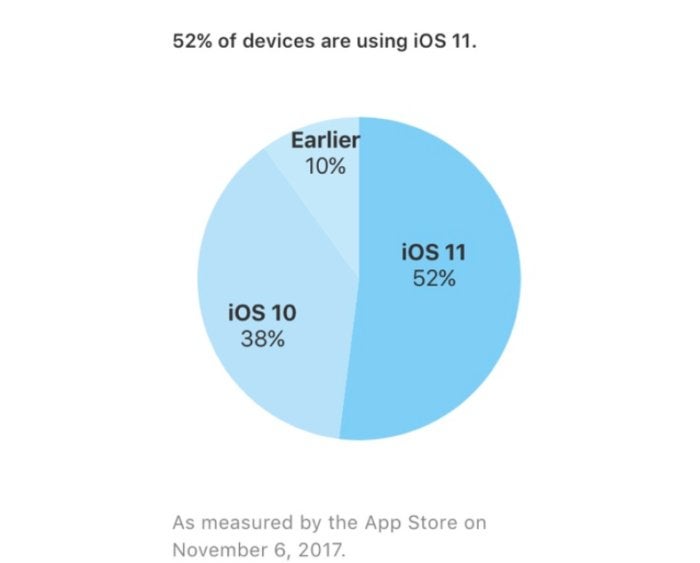 Apple
AppleAs of today, iOS 10 is used on 38% of Apple mobile devices and just 10% continue to use earlier versions of the mobile OS, according to the company.
According to business analytics service Mixpanel's data , adoption of iOS 11 surpassed iOS 10 on Oct. 10. Today, Mixpanel’s data shows iOS 11 is being used on 65% of devices, while iOS 10 is being used on about 28% of them.
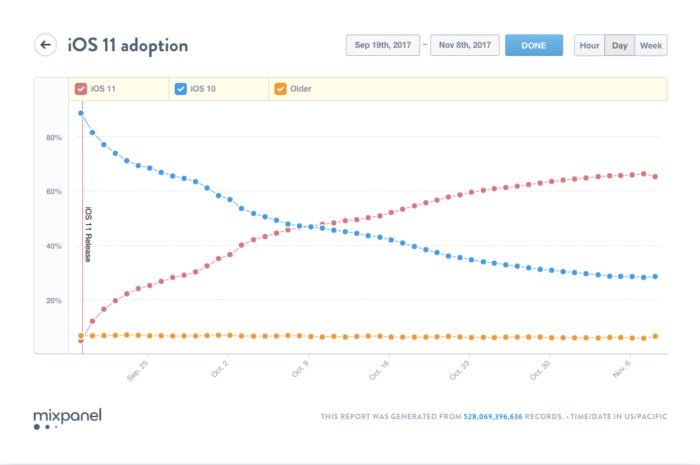 Mixpanel
MixpanelLaunched on launched Sept. 16, 2015, it took just eight days for iOS 9 to surpass iOS 8; in 10 days, it garnered 50% of the install base. And a month after its release, iOS 9 was on 62% of the install base compared to iOS 8, which plummeted to just 29.65%.
 Mixpanel
Mixpanel According to Mixpanel, iOS 9 had been installed on nearly 37% of devices just five days after its launch, even before the iPhone 6 and 6S officially arrived.
One thing that might have slowed early adoption rates this year: Apple introduced two different iPhones in September – the iPhone 8 and 8 Plus, which were available late in September, and the iPhone X, which went on salel Nov. 3. Would-be iPhone X buyers may have skipped their iOS 11 upgrade, knowing they'd get it on the new phone.
In 2014, iOS 8 saw just 16% uptake during the same period, while iOS 7 was on about 20% of devices running the platform five days after launch in 2013.
A different story for Android 8 'Oreo'
In contrast, Google released the next iteration of Android ( Android 8.0 "Oreo") on Aug. 21, and it had been installed on a mere 0.49% – less than half of 1% – of devices in the first two months since its release. Android 6.0 (Marshmallow) and Android 7.0 (Nougat) were deployed on 25.82% and 22.62% of devices, respectively, as of Oct. 19.Those numbers point to the more fragmented nature of the Android OS ecosystem, a point of continual debate by users of the rival systems.
According to Google's own statistics, Oreo had only seen 0.2% uptake as of Oct. 2, the most recent data released.
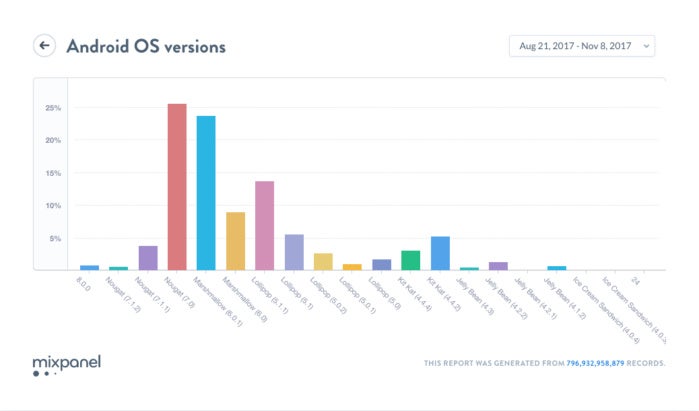 Mixpanel
Mixpanel "New versions of Android are generally not forced on users and devices like a new version of iOS [is]," Gold said. "In fact, many older Android devices stay in play for years and are not even able to be upgraded to the latest version. Generally, no matter which version, it is usually only 10%-20% of devices that have the new version in the first six-12 months, with many older versions still in users' hands."
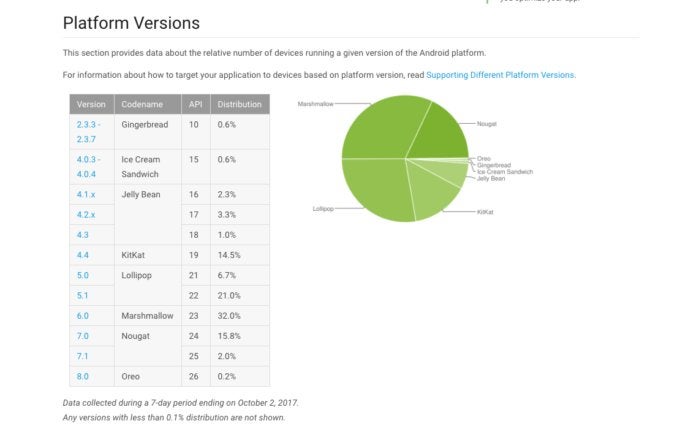 Google
Google While Android OS and Apple iOS make up nearly 94% of smartphone operating systems, Android is by far the dominant one for smartphones, capturing 73% of the smartphone market. More than 1.8 billion smartphone owners used Android phones in 2016, according to Forrester Research.
Android is expected to maintain that lead, with more than 74% market share through 2017, followed by Apple (21%) and Windows Phone (4%).











Post a Comment